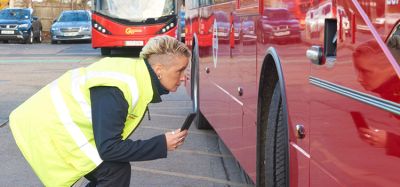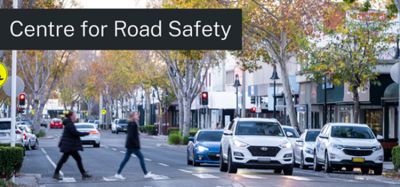Standards on the move
- Like
- Digg
- Del
- Tumblr
- VKontakte
- Buffer
- Love This
- Odnoklassniki
- Meneame
- Blogger
- Amazon
- Yahoo Mail
- Gmail
- AOL
- Newsvine
- HackerNews
- Evernote
- MySpace
- Mail.ru
- Viadeo
- Line
- Comments
- Yummly
- SMS
- Viber
- Telegram
- Subscribe
- Skype
- Facebook Messenger
- Kakao
- LiveJournal
- Yammer
- Edgar
- Fintel
- Mix
- Instapaper
- Copy Link
Posted: 1 April 2005 | Karl Heinz Rosenbrock, Director General, ETSI | No comments yet
If the fridge really is going to talk to the mobile phone and the car really does need to have the latest television schedules fed to its central processors, then we traditional standards makers will have to adapt to the demands from various industry sectors for specifications and standards that allow them to take the new technologies onboard.
If the fridge really is going to talk to the mobile phone and the car really does need to have the latest television schedules fed to its central processors, then we traditional standards makers will have to adapt to the demands from various industry sectors for specifications and standards that allow them to take the new technologies onboard.
If the fridge really is going to talk to the mobile phone and the car really does need to have the latest television schedules fed to its central processors, then we traditional standards makers will have to adapt to the demands from various industry sectors for specifications and standards that allow them to take the new technologies onboard.
The transport industry is a good example of how communications technology is now being embedded in various types of machinery and appliances. Vehicle manufacturers will be heavy users of 3G mobile devices, wired and wireless LANs, broadcast receivers, RFID devices and all kinds of other short range radio devices that make the user’s life a little safer or more convenient.
At a recent conference on Intelligent Transport Systems (ITS), ‘Getting there with European standards’, in November 2004 and hosted by the three European Standards Organisations (CEN, CENELEC and ETSI), many speakers stressed the need for a coordinated effort to help all interested parties to understand the need for fully interoperable solutions for the good of the market and the user.
Assuming that this is the case, and that the speakers were not just being nice to their hosts, it now seems that standardisation and more precisely interoperability are the key issues, as manufacturers and network operators decide on how to best inter-connect.
However, traditional standards makers must adapt rapidly, if they want to be the provider of such precious work. There are many cases these days of industry players getting together to work quickly and with a clear vision in their own fora and consortia. Despite there being over 600,000 standards already available from formal standards developing organisations, these new fora continue to appear.
At the European standards conference, referred to above, Siemens Automotive told delegates that their commitment, under the Autosar project, is to cooperate on standards for the automotive sector – with their partners, which include; BMW, Daimler Chrysler, Bosch, VW, Continental, Peugeot, Citroën, Toyota, Ford, Opel GM and many others (www.autosar.org). Of course this is a wise way to proceed and shows that large companies appreciate the value of cooperation in the standardisation domain, thus allowing for competition in the market place – at the implementation stage and not at the standardisation phase.
Although we believe that in ETSI we are doing a lot to encourage such partnerships, we must still learn from initiatives like Autosar if we are to remain responsive to the industries’ needs. On the other hand, we also need to advise a new generation of communications companies and even the new CTO’s and CEO’s of existing ICT companies, of ETSI’s value and how excellent the European standardisation system really is. ETSI has delivered good value (for money) to its members. Since 1988 we have published more than 4,000 deliverables on GSM, ISDN, DVB, DAB, xDSL, DECT, TETRA, 3G, ATM, IN, Smart Card, etc. We have a lot to offer, but we need to do some additional positive PR work, to show the industry that ETSI already provides both a world recognised standards making environment and the direct participation of industry.
The outlook is not gloomy. In, GSM, 3G, Next Generation Networks, Public Safety, ITS, Broadcast and in Human Factors standards and numerous other areas, ETSI has risen to the challenge.
In our sector – Information and Communication Technology (ICT) – ETSI has been engaged in partnerships to produce market driven standards for some time. The most notable example is the 3rd Generation Partnership Project (3GPP) where, building on the success of GSM, we cooperate with other regions to ensure the success of the UMTS standard as part of a truly global family of 3G standards.
For the Terrestrial Trunked Radio (TETRA) standard we have close links with the industry association which represents users, manufacturers, application providers, integrators, operators, test houses and telecom agencies from the Private Mobile Radio (PMR) and Public Access Mobile Radio (PAMR) communities. We rely on them for essential expert support of the ETSI work programme and for guidance on the market demand for TETRA features. TETRA is an excellent example of where the standard meets the industries’ needs exactly and provides a platform for real interoperability between the TETRA Association’s 100 members.
On the transport side, we are part of a cooperation initiative in the road transport sector, which has just produced the first edition of ‘A Strategic Framework for Intelligent Transport Systems (ITS) Standards’ authored by the ITS Standards Steering Group (ITSSG), which is a collaboration of some of the major expertise in ITS standards development and a working group of the ICT Standards Board (www.ictsb.org).
I could go on, but I feel that these three examples demonstrate that ETSI can remain competitive when organisations are considering which standards body to invest in.
A key strength that we in ETSI can be proud of is that we remain a leading advocate, in the standards world, of a commitment to freely available standards and specifications by free download. In addition, the ETSI Portal and 3GPP web area are set up to allow the user of the standards to easily get in touch with the groups that are making the standards. We believe that the free availability of the standards as well as the possibility to influence the specifications are two of the key elements in producing truly ‘open standards’.
As this contribution is for Intelligent Transport publication, I would like to finish by telling you about the work of ETSI for Intelligent Transport, covering transport and navigation for road, rail, water and air.
A wide variety of specifications are published and work is underway in support of topics such as:
- In-vehicle emergency call (eCall)
- Telematics and all types of communications in road vehicles, between vehicles and between vehicles and fixed locations
- Anti-collision radar in road vehicles – at 24GHz and 79GHz
- Automatic cruise control radar operating at 77GHz and in other frequency bands
- Dedicated Short Range Radio (DSRC) for road
- CALM (Continuous Air-interface Long and Medium Range) project
- Tests for protocols to enable quasi-continuous communications between vehicles, and between vehicles and the infrastructure, to provide for collision warnings
- Examining possible activities in response to an EC Mandate on electronic road toll systems
- Use of GSM for use on high speed railways
- Support of an EC Mandate for Air Traffic Management Systems
- Maritime earth stations operating in the Ku bands (Mar_ESV) on board vessels, allowing passengers to use the Internet on board ships
ETSI has a mission to remain relevant and reactive to the needs of its stakeholders. I invite you to come and see how we plan to put this mission on route. As 2005 gets underway, I have confidence that the new age of technology will provide fantastic solutions for users, with the interoperability of solutions being one of the key achievements. To get there we need open, freely available, ‘here-today-here-tomorrow standards’.
Related topics
Business Models, Fleet Management & Maintenance, Intelligent Transport Systems (ITS), Multimodality, Ticketing & Payments, Transport Governance & Policy
Issue
Issue 1 2005
Related organisations
European Telecommunications Standards Institute (ETSI)








